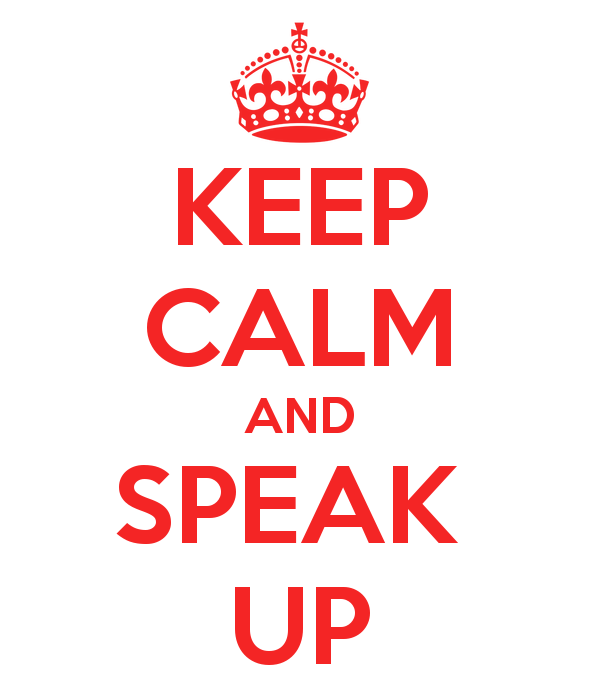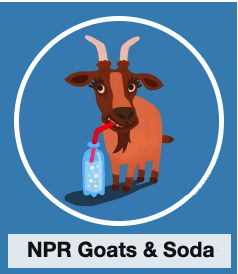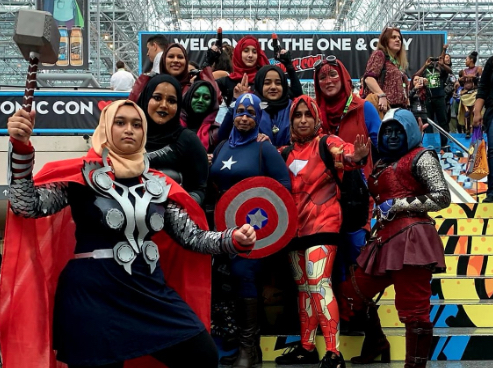Myths abound about people who are homeless and people who have addiction issues in the USA – and probably other countries too. I see the myths stated as fact on online communities, in posts to social media and in online comments on news articles. What I’m NOT seeing are rebuttals of these myths by local nonprofits and professionals that are trying to provide services for people who are homeless or people who have addiction issues. I can’t find rebuttals for these myths on the web sites of the MOST local organizations addressing these issues – I can find them on a Google search, for a national audience (rather than a city or county audience), but only with a lot of digging. And representatives from organizations addressing issues around homelessness or people with addiction issues don’t make any attempt to enter online conversations and counter the myths.
Because so many nonprofits addressing homelessness and addiction issues are not making it a priority to educate the public – and that includes the press and politicians – about why people are homeless, about what services are available to people who are homeless or have addiction issues, about gaps in availability of service, etc., people are not voting for taxes necessary to fund government services to address either of these issues and many people that could donate are not donating to nonprofits trying to address either of these issues. In addition, the growing hostility by many towards people who are homeless or people experiencing addiction issues is deeply disturbing: I’m seeing and hearing more and more comments about how law enforcement shouldn’t carry NARCAN or EVZIO and shouldn’t offer any assistance to someone overdosing, how people should engage in vigilantism to remove people who are homeless from their towns and neighborhoods, how people who are homeless or have addiction issues should be imprisoned, and worse.
National statistics and facts that should be on any web site by an organization addressing homelessness (these come from Move for Hunger, the National Alliance to End Homelessness and the National Low Income Housing Coalition – and probably others that Move for Hunger didn’t credit) include:
- The chronically homeless make up only 15% of the entire homeless population on a given day.
- On any given night, nearly 20% of the homeless population had serious mental illness or conditions related to chronic substance abuse.
- According to the National Low Income Housing Coalition, a family with a full-time worker making minimum wage could not afford Fair Market rent for a two-bedroom apartment anywhere in the U.S.
- A renter earning the federal minimum wage of $7.25 per hour would need to work 90 hours per week to afford a one-bedroom rental home at the Fair Market Rent and 112 hours per week to afford a two-bedroom.
- A lack of employment opportunities, combined with a decline in public assistance leaves low-income families just an illness or accident away from being put out on the streets.
- Many survivors of domestic violence become homeless when leaving an abusive relationship.
- While families, children, and youth are all affected, most of the people who experience homelessness are single adults.
- Chronic homelessness is the term given to individuals that experience long-term or repeated bouts of homelessness. The chronically homeless are often the public face of the issue, however, they make up only 15% of the entire homeless population on a given day.
- Nearly 48,000 or 8.5% of all homeless persons are veterans
- On a given night, nearly 20% of the homeless population had serious mental illness or conditions related to chronic substance abuse.
This article, Why Are People Homeless?, is published by the National Coalition for the Homeless (July 2009) and offers citations for each fact stated.
Are these stats true for your community? Maybe – but you should have information that adapts this data for your own community and reflects the reality where you are. Perhaps a higher rate of your homeless population are veterans. Perhaps a greater number of your community’s homeless population are teens.
Here are the myths that nonprofits, academic researchers and professionals MUST rebut – on their own web sites, on online communities, on social media, in talks with the community, in meetings with politicians and police and on and on – about people who are homeless and people who have addiction issues.
Myth: People who are homeless have addiction issues, and people who have addiction issues are homeless. If you are an organization that helps the homeless, you need to have information on your web site that clearly shows not everyone who is homeless has addiction issues, and for those that do have such, WHY they have such issues. You need to reiterate this information your social media channels regularly and make sure all of your staff and volunteers understand this as well. Organizations that address issues regarding addiction need to have information on their web site noting that people with addiction issues come from all economic levels, all zip codes, all types of families.
Myth: There are plenty of services for people who are homeless or people who have addiction issues – those peple just won’t seek help. I have heard, anecdotally, that every nonprofit in my community where I live that has programs to help people attain affordable housing has a waiting list of years, and that residential facilities to treat addiction have waiting lists of months, and that if a person doesn’t have health insurance, they have no options for addiction treatment other than maybe some AA meetings – but there’s no web site I can point you to that says any of these things for my community.
Myth: People are homeless because they are lazy or don’t manage their money properly. If they would work and not spend money on things like iPhones, they would have enough money to have housing. Every organization that works to assist the homeless should have a web page that lists the myriad of reasons individuals and families become homeless and the myriad of reasons that affordable housing is out-of-reach for so many, including people with full-time jobs or working more than one job, more than 40 hours a week. You need to reiterate this information your social media channels regularly and make sure all of your staff and volunteers understand this as well.
Myth: People who have addiction issues are weak. They’ve made poor choices and they refuse to make the right ones. They lack will power. All they have to do is make the decision to stop using. Addiction is recognized by the medical communities – doctors, nurses and medical researchers – as a medical condition and a crisis health situation. An addict craves his or her drug because her body is craving it, and many will go through extreme flu-like symptoms for days without taking that drug because they are addicted – given the choice between feeling good or shaking uncontrollably and throwing up for hours, most of us are going to choose to feel good, and for an addict, that choice involves abusing the substance to which they are addicted. Drugs change the brain in ways that make quitting hard, even for those who want to. What Is drug addiction? What happens to the brain when a person takes drugs that can turn them into an addict? Why do some people become addicted to drugs while others don’t? The National Institute on Drug Abuse has an excellent web site with fact-based information answering these questions clearly and succinctly. The information in no way absolves someone with abuse or addiction issues from personal responsibilities or the choices they make or the crimes they may commit, but it does offer realistic information on how to effectively prevent and address addiction (and prevention and treatment is complex and long term). The brain changes related to addiction can be treated and reversed through therapy, medication, exercise and other treatments. And also note: many people enter drug treatment involuntarily (court-ordered, or given a dire choice by their families: go to treatment or leave our home).
Myth: The people who are homeless in our community aren’t from our community – they are from INSERT THE NAME OF A BIG CITY OR ANOTHER STATE. I have heard, anecdotally, that the homeless people here in the community where I live in Oregon are from this city or county, that most of them graduated from the local high school and/or have or had parents that lived here. But this statement cannot be found on the web site of any organization that serves the homeless in my community. The information needs to be there as well as regularly shared on social media.
Myth: People choose to be homeless. They want to be homeless. Debunking other myths proves this myth untrue, for the most part. In addition, some homeless people may choose to sleep outside rather than in a shelter because they fear being assaulted in the shelter, they fear having to leave their pets or possessions outside, or they are addicted and may not take their drugs or alcohol into a shelter. You may hear someone say, “I chose to live on the streets. I prefer to be FREE.” Saying this gives the person a feeling of empowerment, a feeling of self-worth. They also may have mental health issues and are not completely rational. A whole range of different issues come into play when talking about teens who are homeless.
Myth: The way nonprofits want society to treat homeless people and people with addiction issues require us to not be upset about things like people using my front yard as a bathroom, needles in the park, people breaking into my car and taking anything left unlocked on my property, etc. No one has the legal or ethical right to threaten you, your family or your property. No one has a right to steal from you. No one has the legal right to leave trash or human waste on your property or in any public space. Efforts to educate about people who are homeless or people who are addicted are not about telling anyone they must accept destructive, unsanitary or illegal behavior. Efforts to educate are about encouraging actions that will effectively address homelessness and addiction and about discouraging actions and attitudes that may make problems worse, may endanger someone or may be violations of the law.
Myth: Services to help people that are homeless will encourage people to want to be homeless. Services to help people that have addiction issues will encourage people to keep using drugs and alcohol. Again, you may hear someone say, “I chose to live on the streets” but it’s rarely true, and given the opportunity to have a safe, private, simple residence, the vast majority of homeless people will take that opportunity. For someone who is homeless, every day is a struggle for survival. Many people who are homeless are chronically sleep-deprived because there is no safe place for them to get a full sleep cycle: they sleep an hour on a bus or train line, then another hour in a library, then another hour somewhere else, and so on. Homeless people are targets for theft and rape, so they have to stay awake to ward off an assault. They don’t have access to a bathroom with they need it most or to a shower or bath regularly. They have nowhere to store essential documents – birth certificate, social security card, certification of military service, contact information for family, etc. – and therefore often lose these documents, and don’t have the resources to get them replaced, which further deprives them of resources needed for survival. They cannot sit in one place for very long – either the weather, a security guard or police will move them along. Most services for homeless people aren’t just providing charity, giving people toiletries or a meal or one night to sleep somewhere; they connect homeless people with resources and assistance to get them into more permanent housing. And while there are some approaches to treating people addicted to drugs that include providing a clean, safe space to use their drug of choice so that they do not overdose and are not using in public spaces (libraries, parks, bathrooms, public transport, etc.), there is no evidence that this creates more drug users or in any way discourages someone from seeking help with addiction.
Here are some good examples of web sites and online material debunk myths about homelessness or addiction in their respective communities:
Debunking the Myths of Homelessness, a resource about Santa Clara County, California (San Jose, Santa Clara, Sunnyvale, Cupertino – Silicon Valley)
FAQs and Myths, by the Coalition for the Homeless, with New York City-specific information
Myths and Questions About Homelessness, from the Canadian Observatory on Homelessness, with Canada-specific information
Exploring Myths about Drug Abuse, By Alan I. Leshner, Ph.D., Director, National Institute on Drug Abuse, National Institutes of Health – rebuts myths like “Drug addiction is voluntary behavior” and “You have to want drug treatment for it to be effective.”
Myths About Drug Abuse and Addiction, from the Indian Health Service, U.S. Department of Health and Human Services – rebuts myths like “People can’t force someone into treatment; if treatment is forced, it will fail.”
If the local nonprofits that serve the city and county where I live had fact-based rebuttals for these myths on their web site, and localized the information, people could share them, over and over and over, on their social media accounts, and refer people to them when they hear these myths at civic meetings, meetings of communities of faith, family dinners, etc. That information would, in turn, help change peoples minds about who is homeless, who is addicted to drugs and alcohol, what the most urgent needs of people who are homeless are, what works to address homelessness, what works to address addiction, etc.
But we can’t share such information, because the information isn’t there. And so, hostilities against homeless people and people with addiction issues grows and grows, and donations stay flat or even shrink.
It took me two hours to compile the aforementioned information. I reject any excuses an organization would offer for not doing this themselves.
By all means, if you want to share this blog to encourage nonprofits in your area to do a better job of communication, please do so. If you want to share this blog in a grant proposal to get more funding for your outreach efforts, please do so. But if you are a nonprofit organization that addresses homelessness or people who have an addiction and you also don’t want to start from scratch and develop your own information for your own web site, please do NOT link to this blog from your web site as a way to fulfill your education efforts – instead, I would prefer you cut and paste content from this blog and put it on your own web site – you don’t even have to credit me – but then make it a priority in the coming weeks to localize the information, with local statistics from your own organization and government agencies like your county health and human services, profiles of clients, links to local news articles that relate to these subjects, and more. There are volunteers that would LOVE to help you find the information you need – all you have to do is recruit them – local colleges and universities are a great place to start (faculty teaching health, social work or public administration topics would be an excellent source for recruiting students to do this).
Also see:
If you have benefited from this blog or other parts of my web site and would like to support the time that went into researching information, developing material, preparing articles, updating pages, etc. (I receive no funding for this work), here is how you can help.






 I recently joined the board of a brand new nonprofit. I am helping with the content of its first ever web site. I decided to look at the web sites of some other similar organizations to get some ideas.
I recently joined the board of a brand new nonprofit. I am helping with the content of its first ever web site. I decided to look at the web sites of some other similar organizations to get some ideas.


 Despite lack of funding, I do my best to
Despite lack of funding, I do my best to